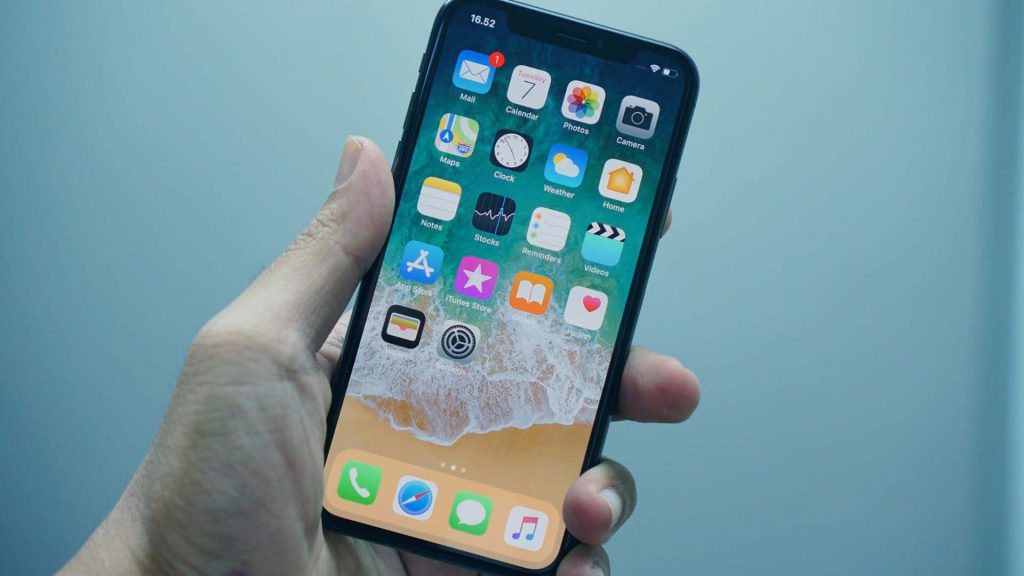As marketers, we know that one of the toughest challenges we face is how to develop creative advertising that captures the customer’s attention in a very cluttered environment in a way that also delivers the key messaging from our brand strategy building preference for our brand and purchase intent. It’s easy to get lost in the creative process to the point where we start developing the thumbs-up or thumbs-down approach we use to talk about if we liked a movie or television show we recently saw.
Creating a film is complex due to character development and plotline, but none of that is critical in developing advertising. A commercial for your brand is also complex, but the criteria for the success of a TV commercial or YouTube video are very different from film or television creative success. The criteria we should focus on as marketers is whether the creative is relevant and meaningful for the target customer and does the creative execution deliver against the key elements of the brand strategy. Easier said than done. Add to that is the challenge of building a lasting momentum with your brand communication that is consistent. Remember, brand and marketing managers come and go. It also needs to be executable across different communication mediums on the customer’s path to purchase, and if you are a multinational company, across different geographies with their accompanying cultural differences.
The Core Creative Idea Tool
One of the first projects we undertook at Garrison Group was to help the Coca-Cola Company develop and implement a methodology that would ensure we created effective communications in partnership with our agencies in over 160 countries for brands like Fanta and Sprite as well as for the mothership – Coca-Cola itself. Rather than approach the project just from the brand side, we involved the creative agencies Coca-Cola was working with at the time – McCann-Erikson, Publicis, Leo Burnett, and others – to ensure we empowered the creative process rather than restricted or limited the creative potential of some incredible minds spread across the globe.
“Give me the freedom of a tight brief”
As a guiding principle, we often referred to the quote from legendary adman, David Ogilvy – “Give me the freedom of a tight brief.” So, the brief is where we started. It included not just a brand positioning, but a motivational hierarchy of the functional and emotional brand benefits that we needed to engage the target customer. We provided a detailed description of the target customer beyond how and why they consumed soft drinks to how they lived their lives, what they cared about, what their needs were from the category, as well as identifying the relevant tension points in their daily lives that we intended to help release with our brand benefits. It was this briefing format that helped in the creation of the successful Biscolata Men commercials in Turkey for Solen and the Coca-Cola Ramadan commercials across the Middle East.
But that was just the start. To create breakthrough campaigns like Biscolata Men and Coca-Cola Ramadan, we needed to ensure that the initial creative ideas the agency came back with after the briefing had a clear and concise evaluation process so that the strong ideas advanced and the off-strategy ideas were quickly discarded. We created the Core Creative Idea evaluation tool with the Coke brand teams and agency creatives.
You, too, can use this tool. Let’s go through what you should do, step by step.
The Creative Tree
As we are talking about a creative process, let’s use a more visual tool to guide the process and the beauty of a simple tree as a metaphor.
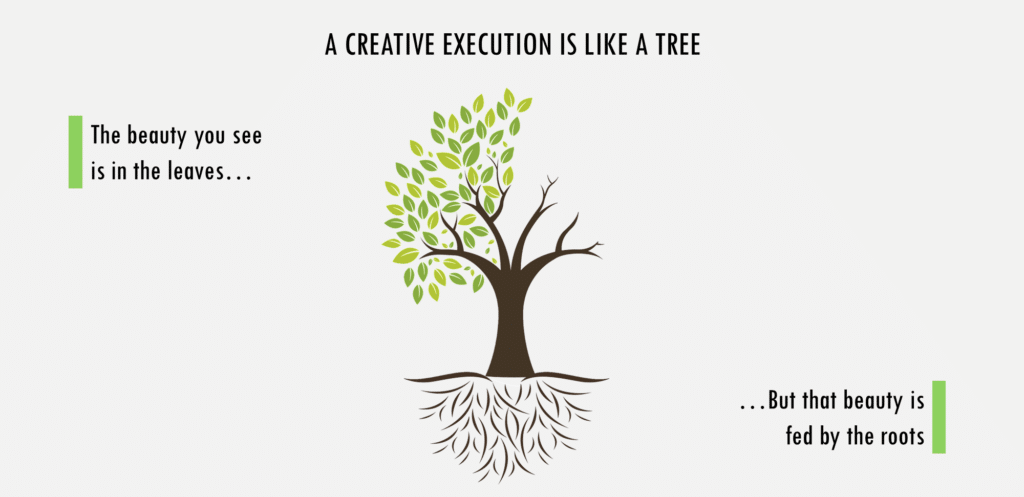
Just as a beautiful tree starts with the planting of a seed in soil rich in nutrients so that strong roots can feed and grow, start with the creative brief as the seed that starts the creative process.
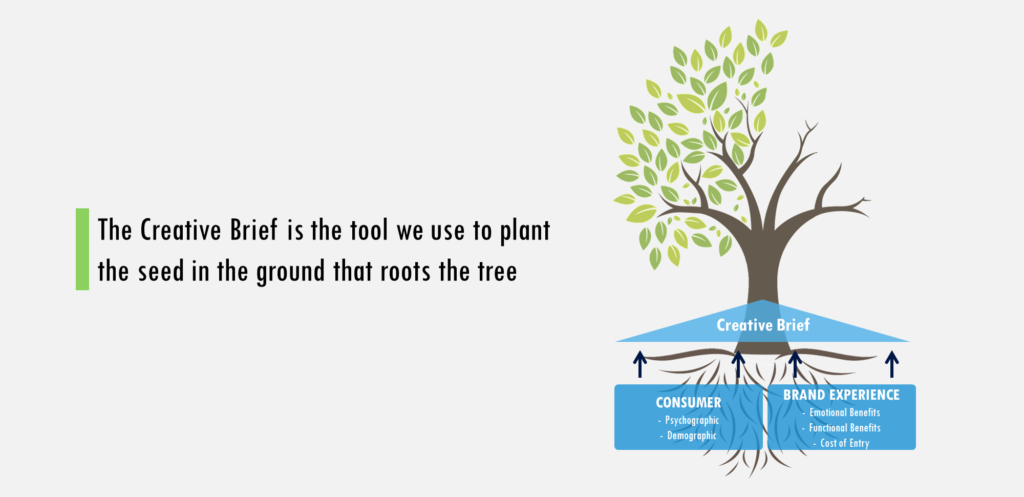
In the brief, you want not just to communicate the brand benefits – both functional and emotional – you also need to look at the customer both in terms of their demographics because they do still matter, but on a deeper level at their psychographics: What defines them as unique human beings living complex lives?
When the agency returns after the briefing with their initial idea, let them present it in whatever form they are most comfortable. They might act out a scene in your office, tell you a story with key visuals and some YouTube videos, or have a fully completed storyboard. What you want to hear and understand is their idea. So let them express it and have them identify the key creative takeaways from what they are showing and telling you.
The Creative Evaluation
Step 1
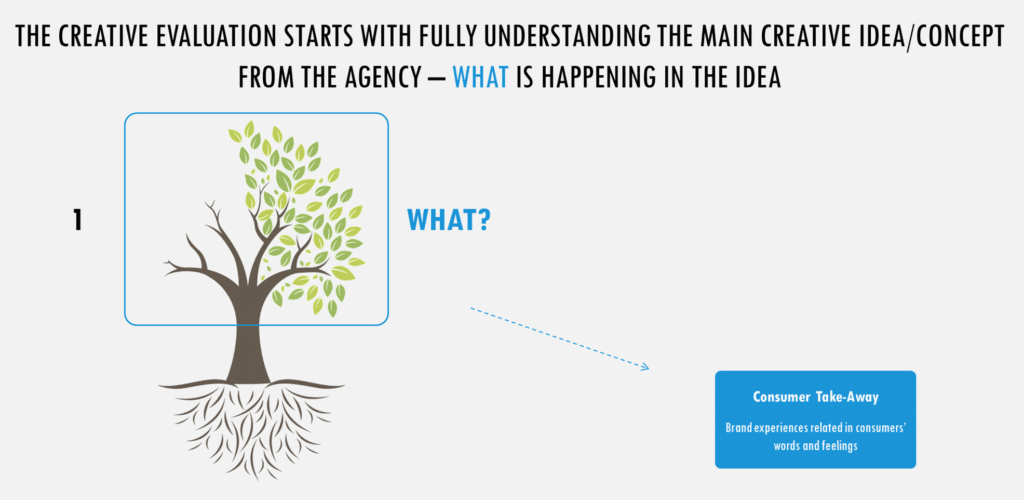
You’ve heard their idea and let them tell you why it is meaningful and relevant. Now it is your turn to evaluate what they have just shown you in terms of what you brief them to do.
Step 2
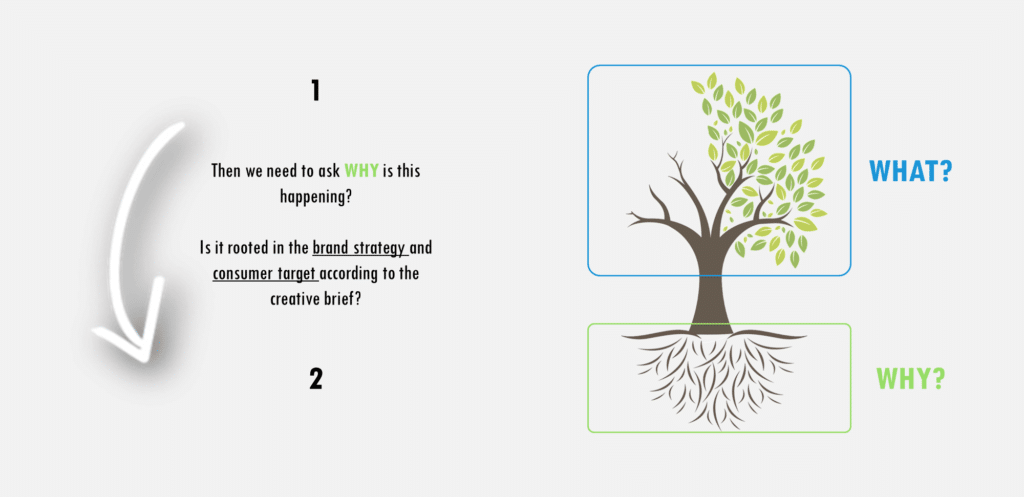
This is a critical step in the initial creative review and evaluation process. If what they have shown you is not rooted in the brand strategy, don’t spend any more time with the idea and certainly don’t get lost in the creative deciding whether the idea is interesting or even emotionally moving. It’s off strategy. Period. Move on.
If the idea is rooted in the strategy both in terms of communicating the most important brand benefits you have outlined in your brief and the agency has communicated those benefits in a way that is relevant and engaging for the target consumer, you’ve got something you can work with. Go forward to the next step.
Step 3
The next step is the one where 90% of the creatives I see from agencies and a lot of what I see in television, print, and other advertising, falls short. It is what I call a one-off idea. It’s a good piece of creative for the medium they have chosen (TV, radio, billboard, print, etc.), but the idea doesn’t have what I call legs – meaning it’s not going to go anywhere other than where it is right now in the specific medium they have shown you.
The idea lacks adaptation capability to different communication mediums to reach the customer on their path to purchase, which could be outside the store touchpoints like internet social media while they are surfing the web at work for what to do this weekend (what we call homing from work), or on subway posters when they are commuting from work or on their way out and so forth. And then, critical to actually selling something, you cannot communicate the creative idea effectively at the point of sale on packaging or other merchandising that A.G. Lafley, former CEO of Procter & Gamble urged his brand teams to focus on as the moment of truth.
Does the creative idea the agency has shown you have the legs for an effective execution across all the touchpoints with your brand on the customer’s journey through their life when you need to engage them to drive purchase intent? Instore communication tools need to work the hardest in both creating purchase intent and converting it into a brand purchase at the moment of truth Lafley was talking about.
Communication touchpoints
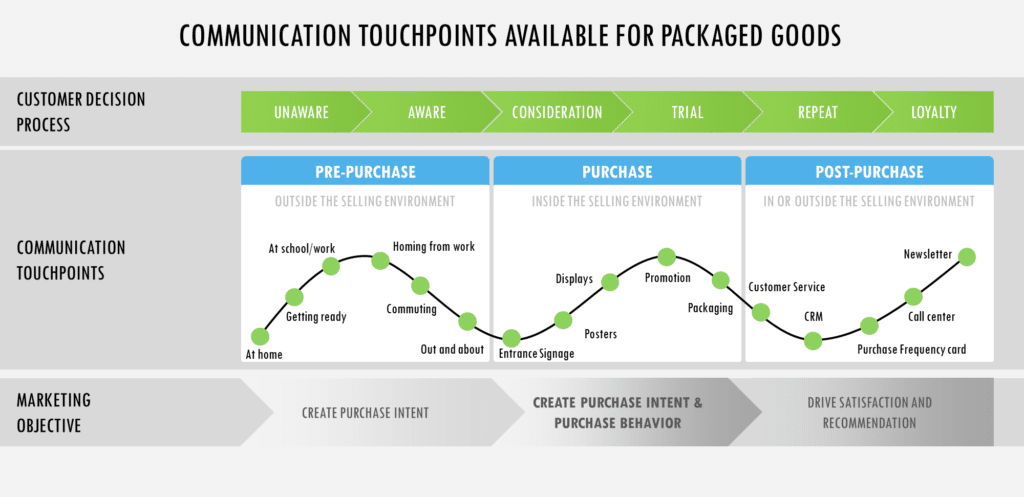
In the Core Creative Idea evaluation process, we identified this as the trunk of the tree that connects the beautiful foliage above to the roots deep in the soil.
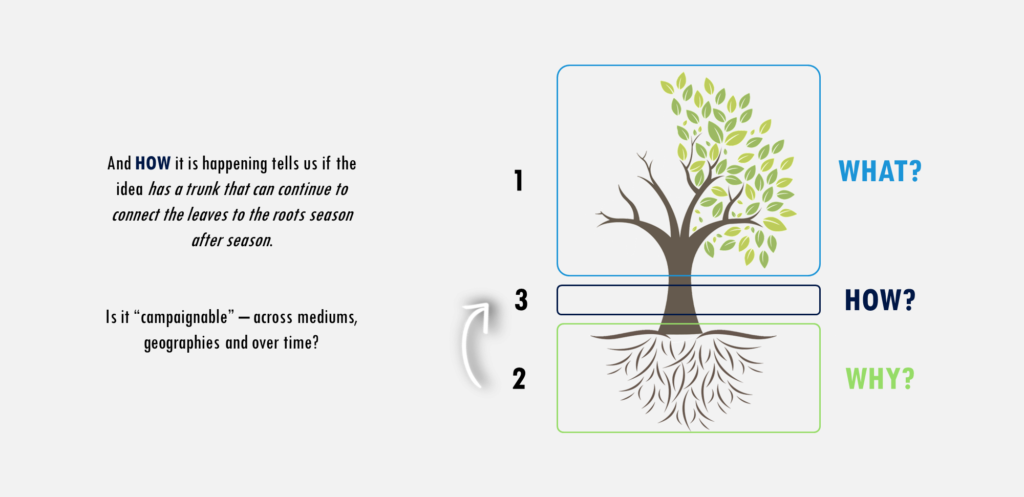
This tree trunk also ensures the creative concept will provide a creative link between the roots (the brand strategy and customer target) and whatever leaves and blooms grow above (different executions across mediums or seasons as the metaphor goes) and everywhere the tree grows across geographies and over time.
Summary steps
So here is a summary of all three steps in the evaluation of the initial creative idea the agency shows you. If you can say yes to the link to the brand strategy and target customer and see that the idea can be used across mediums, over time, and in the geographies you sell your product, then you can feel confident that you have a core creative idea.

Mini Cooper Case Study
Now let’s see how it works using Mini Cooper as an example. Here is a print of the creative agency’s initially proposal:

Which is that Mini Cooper brings to life the brand strategy that having a Mini Cooper will be a more fun and engaging driving experience. Yes, it seems to do that quite cleverly with the car on a skateboard ramp. Is that meaningful and relevant to young women who want to be seen as fun and vibrant? Yes, probably so. But does this idea of driving fun or the car as almost an adult toy work across mediums?

We see the idea can be used with an activity that involves a Mini Cooper on top of the SUV where you typically put all your adult toys like a kayak, a bike, or skis, or as a display in a shopping mall or in a dealer. It even had relevance and meaning dressed up as a sex toy at the Gay Pride Parade in San Francisco. After reviewing these creative executions, I would say that Mini Cooper is executing a core creative idea that is on strategy, relevant and meaningful to their target customer segment, and can have an effective execution over time and across mediums and geographies.
Mini Cooper Creative Idea Evaluation
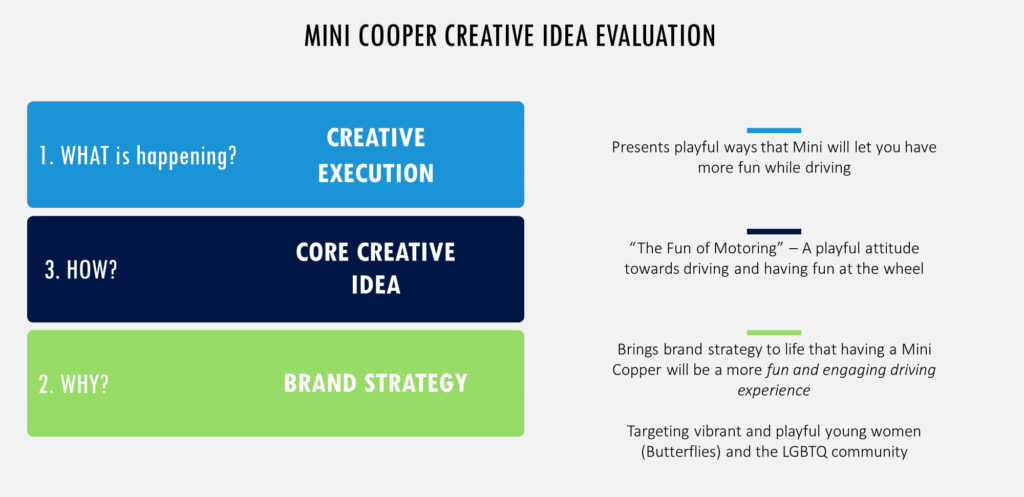
The Core Creative Idea evaluation tool is an effective device to help you determine whether a creative idea suggested by your agency is on strategy and if it is campaignable, i.e., executable over time, across geographies, and in different mediums both inside and outside the store or selling environment.
What it doesn’t measure is the pure creative power of the idea. That is a subjective judgment call, and in most cases relies on you as the marketer to trust the creative capabilities of your advertising agency. In the end, the best judgment of effective brand communications is in the marketplace itself and whether the creative, in whatever medium, drives increased sales.
Your job as a marketing director or brand manager is to ensure that what the creative teams claim to be a powerful creative idea is on-strategy and has the necessary elements to be a core creative idea that you can fully integrate into all your brand communications. Do your job and give the agency a tight brief and fair evaluation criteria so they can do their best work. And remember, this is a team sport. Involve your agency as a member of your team and like a good coach, encourage and support all the team’s players to do what they do best.



